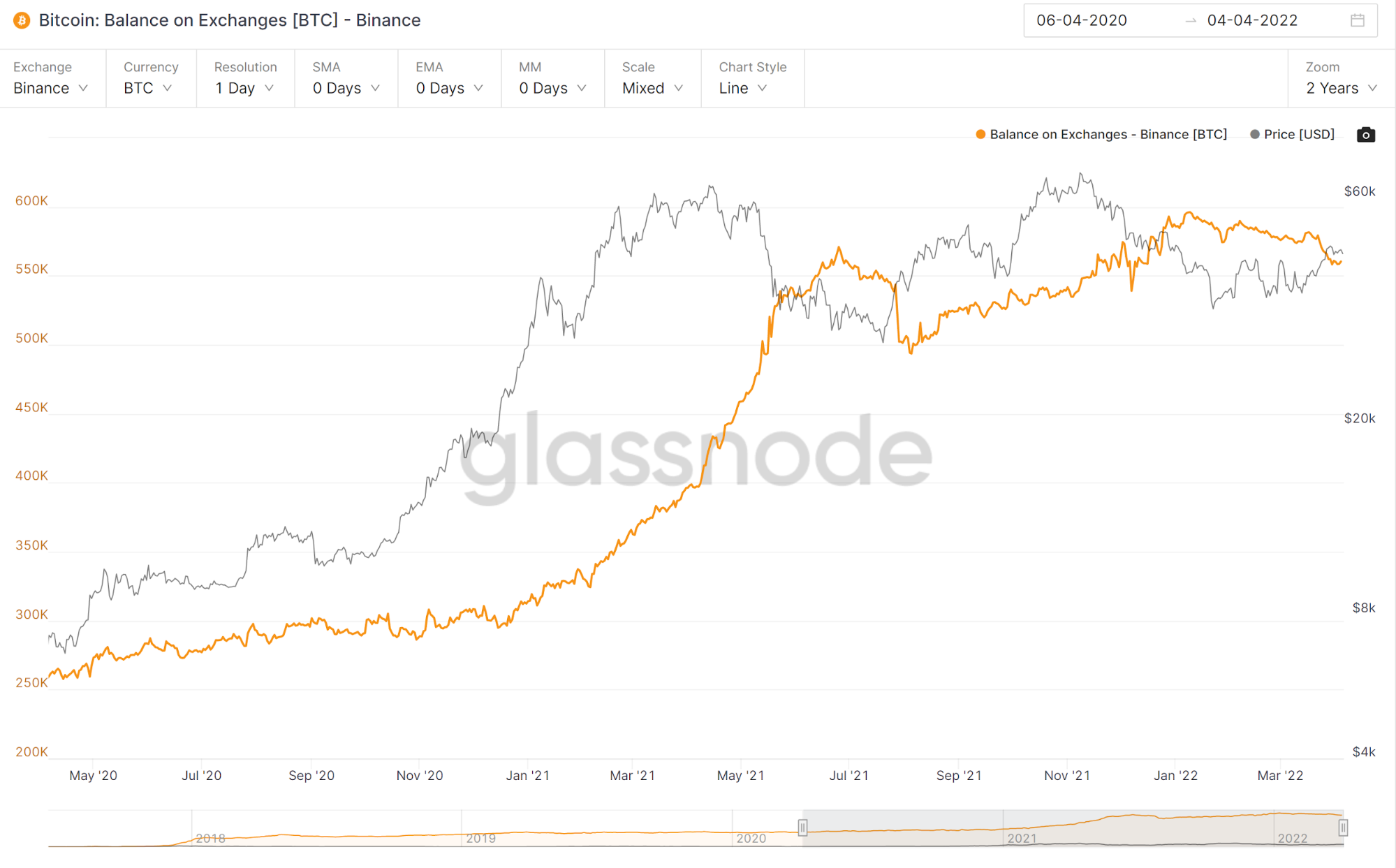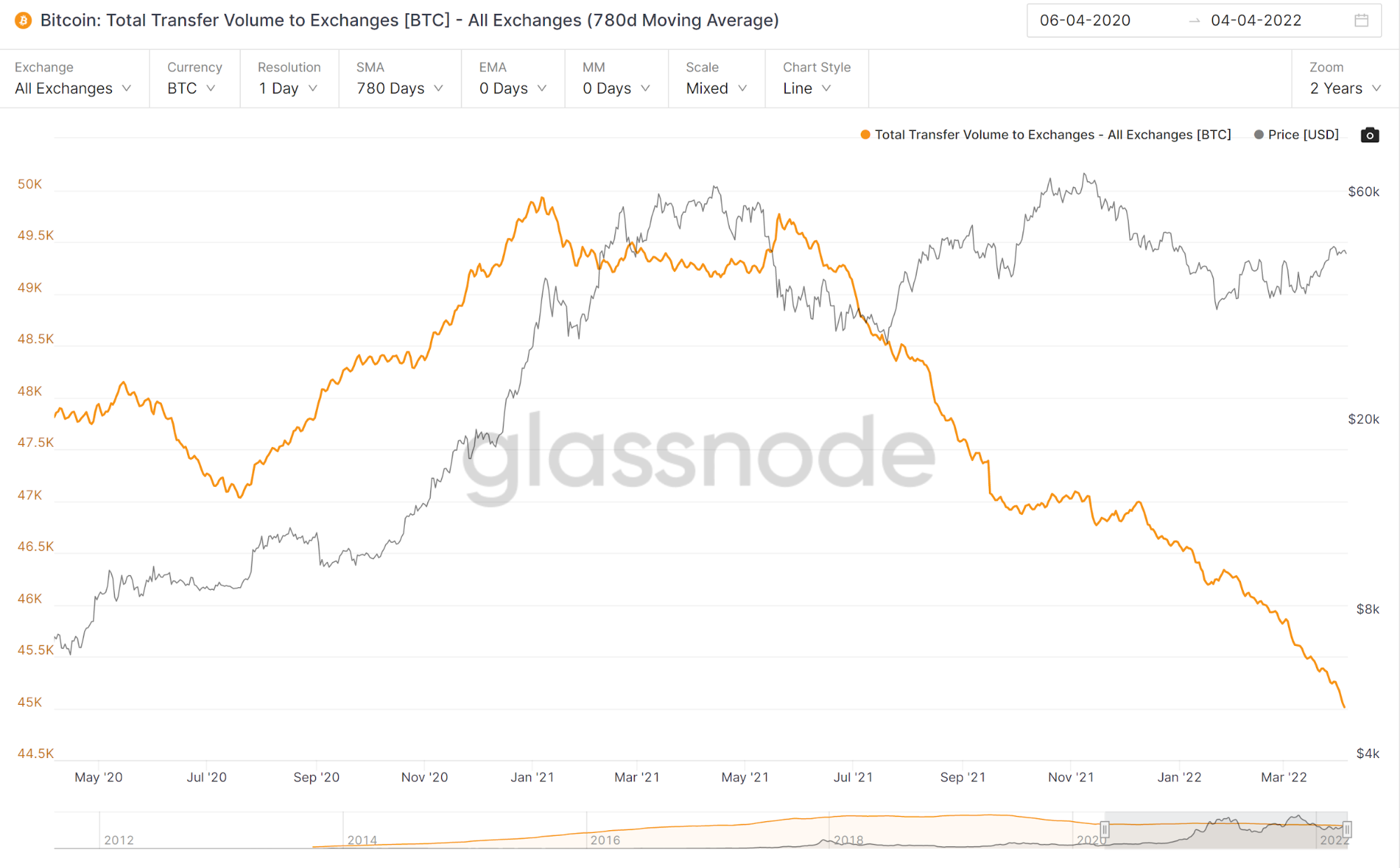One of the biggest factors that distinguish average crypto traders from seasoned investors is the use of technical analysis and on-chain metrics. While the former can take a considerable length of time to master, the latter is much easier to grasp and can be leveraged straight away to improve a person's trading.
A great place to start using on-chain metrics is with crypto exchanges. Exchanges are businesses that allow traders to buy and sell their crypto, such as Binance, Coinbase and Kraken.
When analyzing exchanges, the most appropriate on-chain metrics provide trading signals and insights using crypto transaction data – or, "who is sending what, where and to whom."
Monitoring the flow of crypto in and out of exchanges allows traders to determine whether the market is in a bullish or bearish phase and, coupled with other metrics, can help you make better investment decisions.
What is an exchange balance?
The term exchange balance simply refers to the amount of crypto that’s currently held on a particular platform – usually in several separate known wallet addresses. If the amount of crypto held on an exchange is high, it means there is a lot of liquidity for buying and selling tokens.
High liquidity indicates that the market for a particular cryptocurrency is active. As a result, it is easier to trade cryptos in a liquid market since trade orders are filled more effectively due to the larger volume.
Conversely, when the amount of crypto held on an exchange is low, less liquidity is available in the market. A less liquid market means that price volatility is higher, making it riskier for traders to buy and sell cryptocurrencies. This is because there are fewer buyers to prop up prices if there’s a sudden decline and fewer sellers to hamper breakouts if there’s a sharp rally.
Example 1
The balance of bitcoin (BTC) held on addresses linked to all exchanges has fallen by 18.6% to 2.47 million in April 2022 from 3.04 million in May 2020.
This indicates that, across all exchanges, investors are holding their bitcoin – a strong bullish sentiment – as they believe that the price of bitcoin will rise in the future.

Bitcoin balance on exchanges (Glassnode)
Example 2
The balance of bitcoin held on addresses linked to Binance has increased by 46% to 560,355 in April 2022 from 259,709 in May 2020.
In the case of Binance, the amount of bitcoin on the exchange has risen since the halving in May 2020. This indicates that bitcoin is more liquid on this exchange with investors looking to potentially sell the asset.

Bitcoin balance on Binance (Glassnode)
Exchange inflows
Another way of tracking an exchange’s balance is to look at the volume of cryptocurrencies flowing in and out of the exchange.
When cryptocurrencies are being transferred to exchange addresses, there is an inflow of liquidity into an exchange.
Moving cryptocurrencies to an exchange requires investors to remove funds from storage. By doing so, they will inevitably incur a transaction cost. This means there must be some intent behind each investor’s decision since no one enjoys incurring costs.
One reason for an increase in exchange inflows is that investors are looking to sell their crypto assets. Exchange inflows due to selling pressure is a bearish signal and indicate that prices could fall.
Additionally, a rise in exchange inflows could reflect investors' desire to trade on the derivative market. This type of inflow may lead to greater market volatility as trading volume increases.
Lastly, investors could be looking to capitalize on an airdrop or move funds to exchanges to stake their crypto. Actions like these are neutral and price impacts are difficult to discern.

Bitcoin exchange inflows (Glassnode)
Exchange outflows
The opposite of exchange inflows is outflows. When cryptocurrencies flow from exchanges, liquidity is leaving the exchange.
Oftentimes, outflows indicate that investors are moving money to storage and by doing so will incur a transaction cost.
Outflows can be a bullish signal since investors may no longer wish to quickly sell their assets and instead opt to store them securely. This indicates that investors may feel prices are set to increase.
That said, cryptos could also be subject to the derivative markets. The more liquidity that is removed from an exchange, the fewer trades occur. Investors may remove assets from the derivative markets to take their profits or reduce risk in their portfolios.

Bitcoin exchange outflows (Glassnode)
Who is moving funds?
Another key factor to understanding exchange balances is the type of trader moving funds. Whales – traders who own more than $1 million of crypto – are important to watch when looking at the exchange flows.
Despite retail investors playing an ever-greater part in crypto trading, institutions and whales still make up the majority of market driving crypto trades and impacting market trends.
For instance, if whales are reducing their crypto holdings as prices incline, a market top may be on the horizon – especially if smaller investors are actively increasing their holdings.
In the chart below, we can see that the largest of whales (green) stabilized their bitcoin purchasing throughout November as prices tumbled. However, in December as the price of bitcoin seemingly bottomed, they rapidly increased their holdings – flatlining from December to April.
Conversely, retail investors (red) followed suit, and have even started to accumulate more bitcoin while whales cool off their purchasing.
Following the movements of whale traders is a great way to monitor who is moving funds on or away from exchanges, as whales tend to buy when markets bottom and sell when markets top – setting the trend for retail investors.

Large investor bitcoin balances (1-100+ BTC) (Glassnode)
DISCLOSURE
Please note that our privacy policy, terms of use, cookies, and do not sell my personal information has been updated.
The leader in news and information on cryptocurrency, digital assets and the future of money, CoinDesk is a media outlet that strives for the highest journalistic standards and abides by a strict set of editorial policies. CoinDesk is an independent operating subsidiary of Digital Currency Group, which invests in cryptocurrencies and blockchain startups. As part of their compensation, certain CoinDesk employees, including editorial employees, may receive exposure to DCG equity in the form of stock appreciation rights, which vest over a multi-year period. CoinDesk journalists are not allowed to purchase stock outright in DCG.
:format(jpg)/cloudfront-us-east-1.images.arcpublishing.com/coindesk/RCOELERYY5DZZNKE2XL4KCFEMA.jpg)

:format(jpg)/cloudfront-us-east-1.images.arcpublishing.com/coindesk/DMG6DBTBSNHYRJNLOYIOQDROGI.jpg)
:format(jpg)/cloudfront-us-east-1.images.arcpublishing.com/coindesk/PFTJB3CBBZCGPEUSNCEZ7F3Z7U.jpg)
:format(jpg)/cloudfront-us-east-1.images.arcpublishing.com/coindesk/PJTR3KRDWJCRVE3QREM6KUOK7A.png)
:format(jpg)/cloudfront-us-east-1.images.arcpublishing.com/coindesk/FBKUMHO4CJFYPNW2J7ZSXYCBU4.png)


